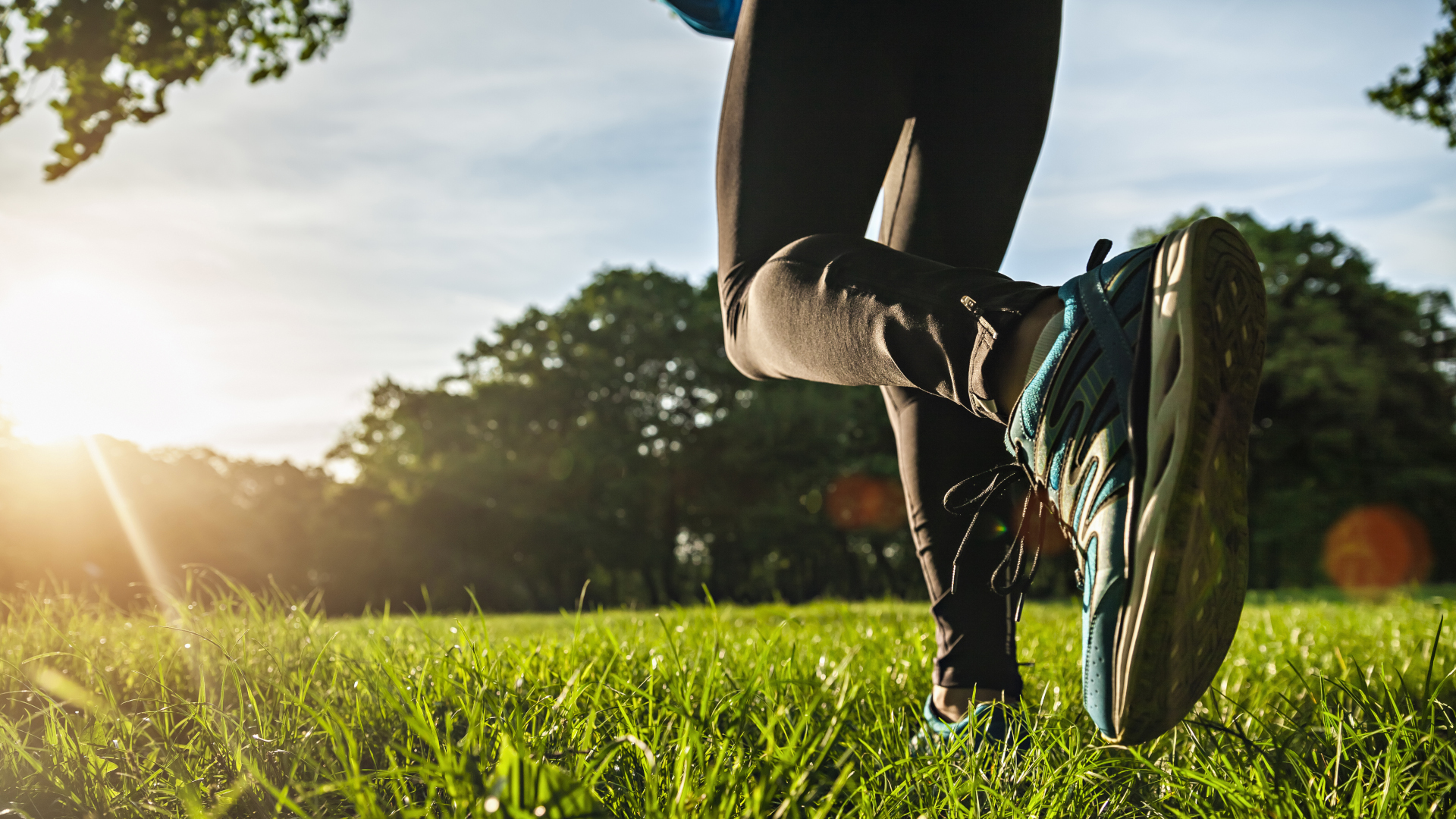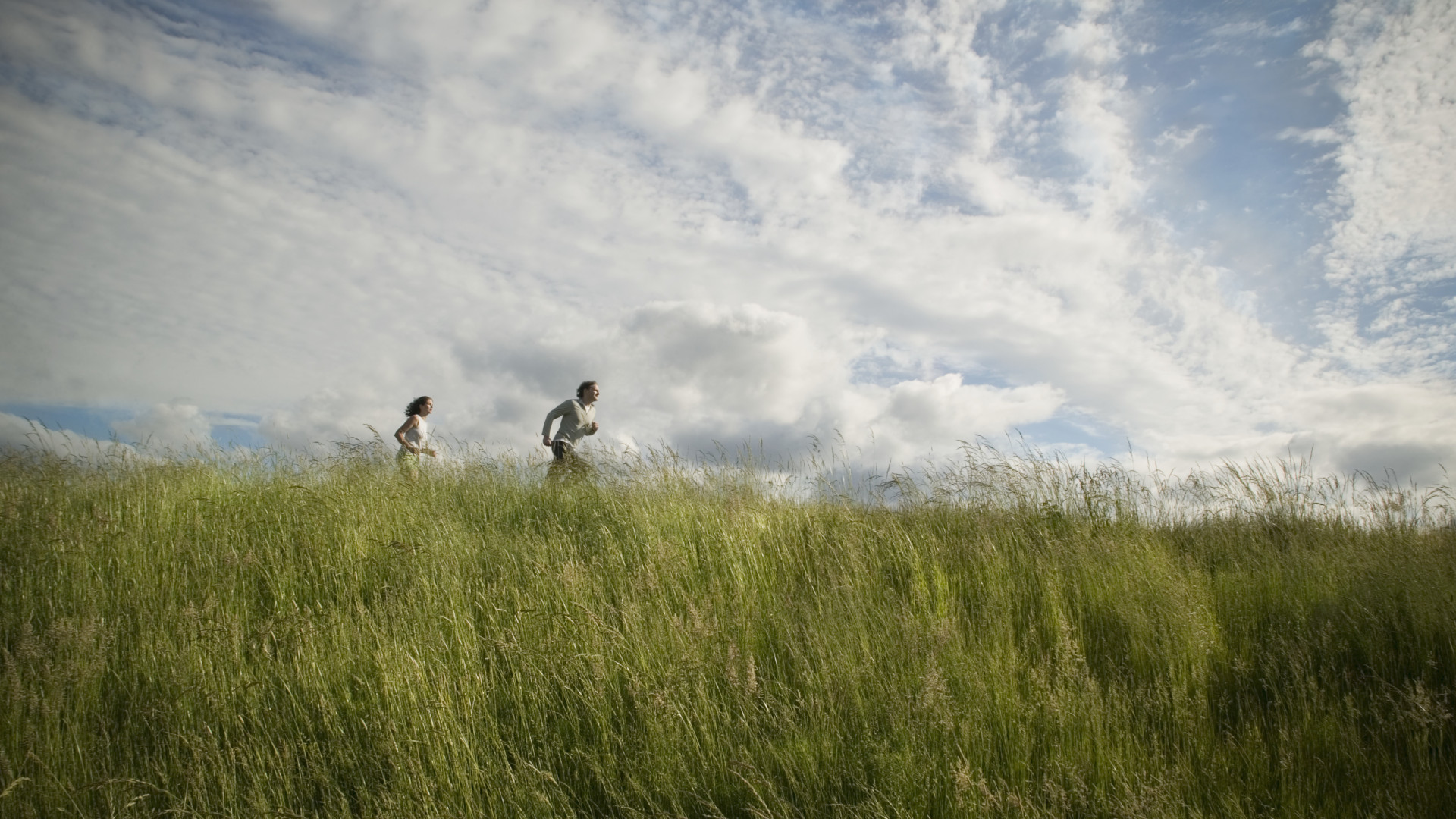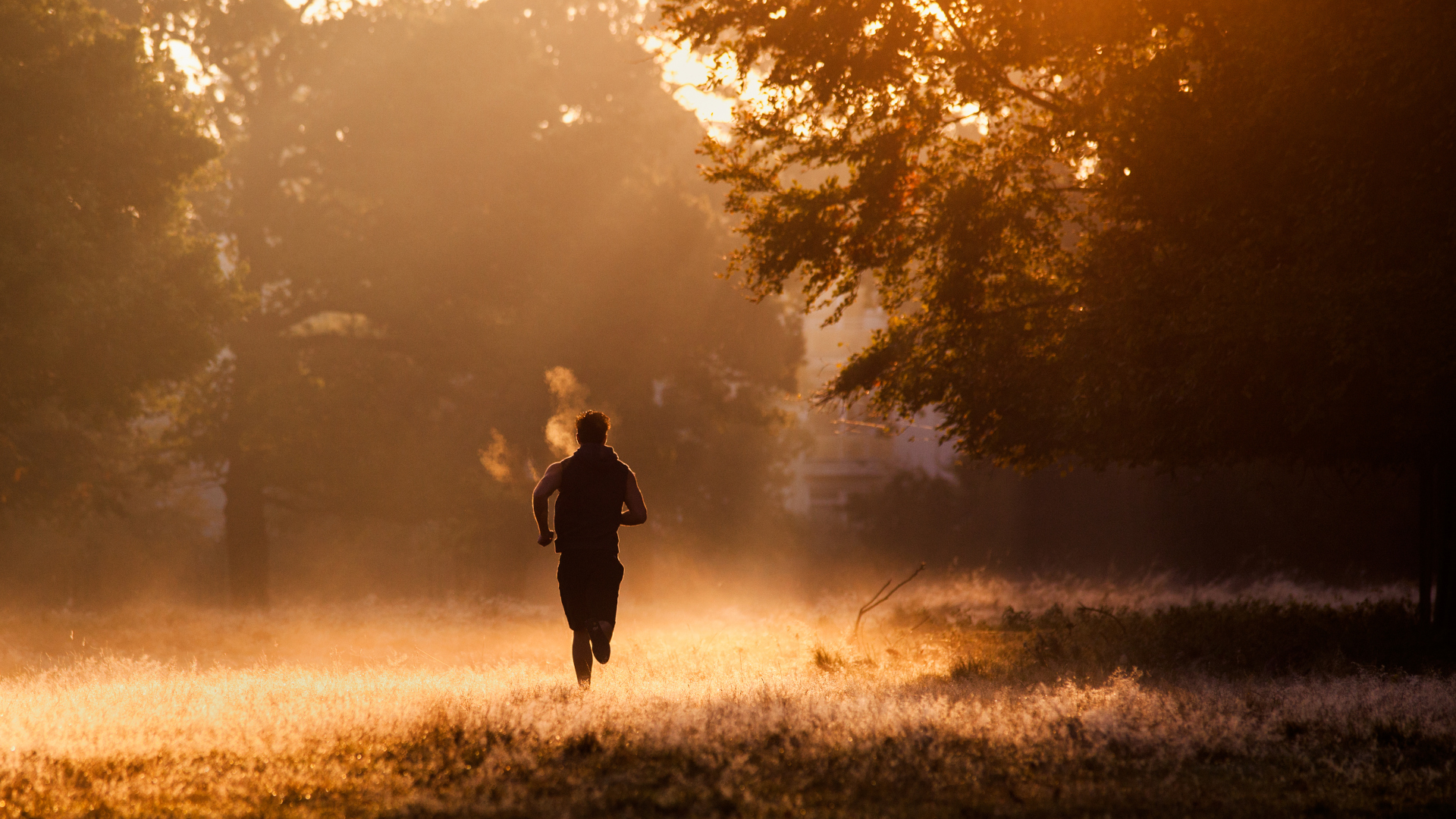5 reasons you should try running on grass
Running on grass has some proven benefits, from boosting your performance to increasing your sense of happiness

When we talk about running outdoors, we often only think about road versus trail, but there are other surfaces that deserve some serious consideration, such as running on grass. Whether you’re attempting a grass-covered trail or doing running drills on a nearby lacrosse field, running on grass can give your training a serious boost. Curious? Check out these five benefits to running on grass, plus what you'll need and when to avoid it.
1. Low impact
Assuming you maintain good running form, running on grass has a considerably lower impact on your joints than a hard surface like concrete. You can tell because when you run on concrete, you’ll probably move at your fastest pace – that’s because you’re rebounding off the unforgiving surface beneath your feet. With a soft surface like grass, you’ll run more slowly because it’s absorbing the impact of each step.
While the consequences of impact of hard vs soft surfaces on your joints is still being hotly debated, a 2013 study in the Journal of Strength and Conditioning Research did find that running on soft surfaces like sand and grass lowered muscle damage markers, though it’s not year clean if this is due to the low impact, or the fact that you run slower on grass.

2. Strengthens muscles
So what about that slow running? It might not sound very appealing to you, especially if you’re trying to increase your running pace, but it does have some benefits. Primarily, that soft surface that absorbs your footfall makes it harder for you to propel yourself forward. When you’re bouncing off the concrete, or even a firm trail, the rebound helps your momentum, but without it, you have to rely a lot more on muscle strength to keep moving. Running on grass therefore can improve the strength of the muscles, tendons and ligaments in your legs and feet, and this can actually improve your performance when you’re back on hard surfaces, according to the previous study.
3. Burns more calories
Assuming you’re at least trying to maintain something close to your regular running pace and therefore working harder to account for the reduced rebound, you’ll burn more calories when you’re running on grass than concrete, though how much isn’t known. A 2013 study in the Journal of Experimental Biology did find that running on sand uses 1.6 times more energy than on a hard surface, and while the comparison probably depends on the softness of the sand versus the grass, it’s likely that you can enjoy a similar increase in energy expenditure on grass.

4. Good for balance
A well-maintained lacrosse field is likely to be pretty flat and easy to run on, but outside of that, grass will likely provide a more uneven surface, between non-uniform patches of grass and unlevel ground in rural terrain. Much like trail running, this is a great way to improve your balance when you’re in motion, which in addition to helping your running performance is useful for all of your activities, especially as you age.
5. Great for mental health
As we’ve previously reported, green exercise – or exercising out in nature – reaps massive mental health rewards, reducing stress, anxiety, depression and fatigue. Of course, all exercise helps in this regard, but doing it in green spaces with fresh air really ups the ante.
Advnture Newsletter
All the latest inspiration, tips and guides to help you plan your next Advnture!

Running on grass: what you’ll need
If you’re convinced that adding some grass runs into your weekly training has some great benefits, your shoes may not cut it – you’ll need a good pair of trail running shoes. Because grass can be quite slick when wet and less uniform, you’ll be glad for those deeper lugs on your soles to help you maintain balance.

Running on grass – when to avoid it
One last word of advice. There are a few scenarios where you might want to avoid running on grass. The first is if you’re allergic to grass pollen and it’s pollination season. Running with allergies is difficult enough, so if you can avoid exacerbating your symptoms during allergy season, you’ll be better off.
Second, after heavy rain, running on grass will basically mean you're running in mud, and doing so will be extra tricky and may churn up the soil and contribute to unnecessary erosion.
Similarly, if the area that you want to run on is already in use for hikers or other sports, consider it fair game, but if you’re going off-trail, you will contribute to soil erosion and it’s better to stick to existing trails.
- Best GPS watches: for hiking, train running, and more
Julia Clarke is a staff writer for Advnture.com and the author of the book Restorative Yoga for Beginners. She loves to explore mountains on foot, bike, skis and belay and then recover on the the yoga mat. Julia graduated with a degree in journalism in 2004 and spent eight years working as a radio presenter in Kansas City, Vermont, Boston and New York City before discovering the joys of the Rocky Mountains. She then detoured west to Colorado and enjoyed 11 years teaching yoga in Vail before returning to her hometown of Glasgow, Scotland in 2020 to focus on family and writing.

